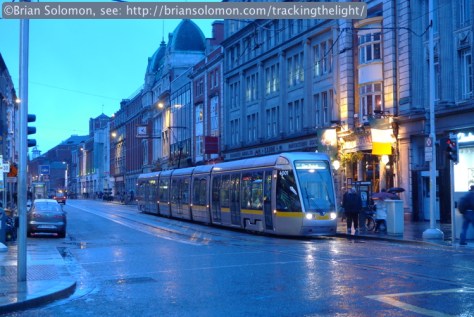Playing with the LX7.
Among the built-in features of the Panasonic LX7 is a HDR—High Dynamic Range—setting in ‘Scene Mode’.
The theory behind HDR is the ability to produce a digitally exposed photograph with better highlight and shadow detail through post-processing blending of two or more images of the same scene exposed at different light settings. (In other words, a multiple exposure).
A common way to accomplish this is to place the camera on a tripod and make three images of identical composition with one image over-exposed (too light), one normally exposed, and one underexposed (too dark). Then combine all three images as multiple exposure.
When done effectively this can be used to overcome the limited dynamic range inherent to digital sensors. It can also be used creatively through extreme exposure variations to produce some outlandish images with nightmare skies and penetrating shadows.
The LX7s feature makes exposing a basic HDR style image exceptionally easy as the camera automatically takes three photos in rapid sequence and processes them immediately in-camera to produces a blended Jpg available for viewing.
I found this most effective in high contrast scenes, such as sunsets, that might be difficult to capture because of the camera’s limited exposure range. In other situations, it seems to flatten the contrast and doesn’t necessarily make for a more pleasing photograph.
Another point, if the scene isn’t static, ‘ghosting’ will occur of moving elements. My sense is that camera’s software must have a comparative feature that attempts to minimize the effect of ghosting, but the results can appear unnatural if not outright bizarre. Especially, when the subject, say a passing locomotive, become transparent!
Below are a few of my experiments. With most I’ve first included a comparison image (an ordinary non-HDR photo) exposed in the normal way.











This is a work in progress, and I’ll follow up in more detail in a later post.
Tracking the Light posts new material every morning.
Please spread the word and share Tracking the Light with anyone who may enjoy seeing it!
http://briansolomon.com/trackingthelight/
































































































































































































































